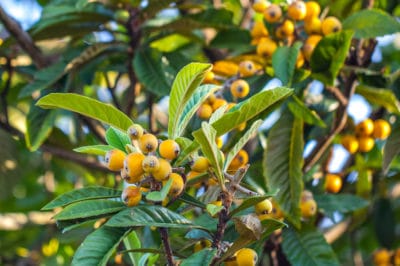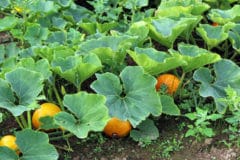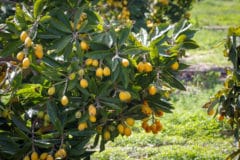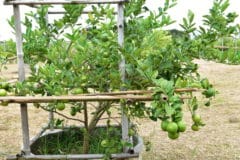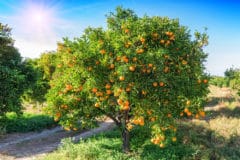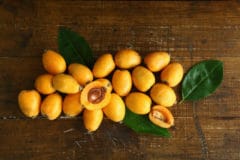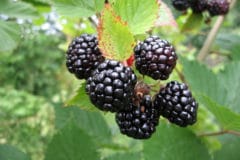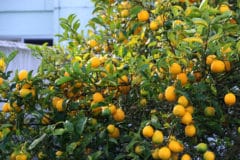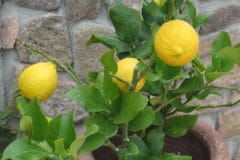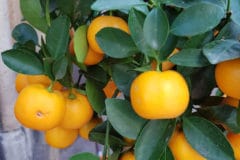Where to Start
The easiest way to keep your loquat three healthy with an organic care regimen is to prevent problems before they arise – and prevention means knowing your tree.
Know Before You Grow
Loquat trees grow in USDA plant hardiness zones 8 through 10. But they don’t bloom until fall or set fruit until late winter. And temperatures below 27°F (-2.8°C) kill their flowers or young fruit. So the chances of their producing a harvest drop considerably in zone 8, where the winter low can hit 10°F (-12.2C).
In other words, all the organic care in the world won’t get you a loquat harvest if your winter is too cold.
Where to Plant a Loquat Tree
If your loquat tree could speak, it would ask for a site with well-draining soil and six or more hours of daily sun. In places like Texas, where summer temperatures often exceed 100°F (37.8°C), it would also request afternoon shade. Prolonged high heat will slow its growth rate.
Other Soil Requirements
Loquats accept most soils. including rocky, limestone-rich ones, Only those that flood or contain lots of salt bother them. To fruit their best, however, they need organically rich, deep loam.
Fertilizer
Runoff from loquats fertilized with chemical-based nitrogen can kill fish in nearby water. For an organic alternative, use 0-10-10 fish emulsion beginning two months after planting:
- Mix 2 tablespoons (30 ml) of the fish emulsion into 1 gallon (3.78 liters) of water. Each gallon covers 25 square feet of soil.
- Pour the solution into a spray applicator.
- Spray the leaves and pour what remains around the base of the tree.
- Water well.
- Reapply every three weeks through the growing season.
From the second year on, reduce the application to once per month.
Organic Pest and Disease Care
Whatever goes into a loquat tree goes into its fruit, including chemical pesticides and fungicides. These organic measures ensure a harvest that’s safe to enjoy.
Bug and Pest Control
Bag the developing fruit clusters to keep caterpillars and Caribbean fruit flies off them. Control sap-sucking scales and aphids with insecticidal soap spray. While the tree is still small, knock aphids off with a blast from the hose.
Fire Blight Management
Promptly prune fire blight-infected branches, cutting them back 12 inches below infected wood. Work on a dry day with no rain in the 48-hour forecast and disinfect your pruning tools in rubbing alcohol between cuts.
Follow up during winter dormancy by spraying with 2 tablespoons (60 ml) of neem oil in 1 gallon (3.78 liters) of water. Apply the oil from the soil line to the branch tips when the temperature is below 80°F (26.7°C).
